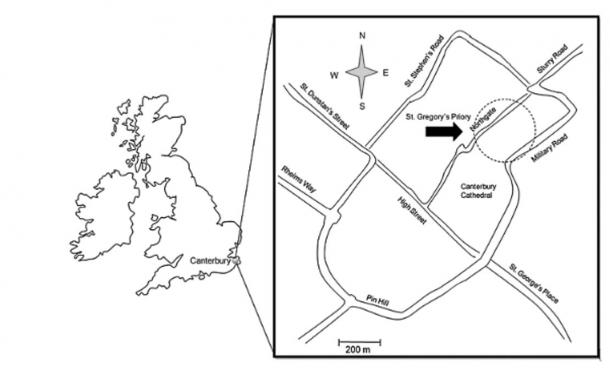
Study reveals surprising facts about diets of Medieval children in England
Studying foods people ate is an important step towards learning more about ancient cultures. Historians try to piece together what foods ancient people ate, preparation methods, and the foods people avoided to try to gain insight into ancient cultures as a whole. This information can help to provide a more comprehensive view of how ancient cultures lived, and how they evolved into modern times. Foods can be studied by viewing ancient texts, the discovery of bones and eating utensils from ancient meals, and studying teeth from ancient individuals.
A recent study conducted on the teeth from children living during the 11th through 16th centuries provides insight into the foods those children ate, and the impact that socio-economic status may have had on their diet. According to Daily Mail, the teeth were studied through the use of 3D microscopic imaging. The testing, known as dental microwear texture analysis, measures microscopic changes in the surface of teeth. By using this testing, scientists were able to study the enamel from children’s molars without damaging the teeth.
To conduct the study, scientists utilized teeth found at St Gregory's Priory and Cemetery in Canterbury, England. Teeth were taken from 44 children, all aged between 1 and 8 years old when they died. By comparing these imaging results to the imaging results from the teeth of modern-day children, the researchers were able to make comparisons and draw conclusions on how diet had changed.

Approximate location of St. Gregory’s Priory in contemporary central Canterbury, UK. (Justyna Jolanta Misziewicz)
The study revealed that children were typically weaned by the age of one, and subsequently fed a diet comprised of pap and panada. Pap is a mixture of milk, flour, and egg yolk, and panada is bread, broth, and butter. As the children got older, they were fed a greater variety of more complex foods, advancing to foods like meat and pottage – a meat and vegetable stew - by age 6, and adult foods by age 7. This is in drastic contrast to modern-day children, who eat a great variety of foods, many of which are processed.
- New study reveals ancient Egyptians were mostly vegetarian
- Stone Age Britons traded with European farmers 8,000 years ago
Noticeably absent from this ancient diet is today’s heavy emphasis on fruits and vegetables as a necessary component to a healthy diet. Today’s parents are instructed to encourage children to eat as many fruits and vegetables as possible, starting with purees for babies, and moving on to a diet similar to an adult diet as early as the child can properly chew such foods.

Panada (Bread Soup). (Recipe Bridge)
While the ancient diet revealed by this study appears to have been a minimum necessary to sustain life, today’s diets are intended to expand a child’s palate and ensure they don’t grow up to be picky or finicky eaters. Unsurprisingly, while the ancient’s children’s diet seems bland and boring, the lack of processed foods and sugars in their diet provided one significant benefit: the ancient children were revealed to have far less dental decay than modern children.
One surprising aspect of the study is what it revealed about how socio-economic status impacted diet for these ancient English children. Throughout history, and in today’s modern world, it is generally assumed that a higher social status equates to a greater availability of a variety of foods, as well as higher-quality foods. While that may be true for adults during the 11th through 16th centuries, this study surprisingly revealed that children ate the same foods, regardless of socio-economic status.
- Is the Paleo Movement Genetically Out of Sync with Modern Humans?
- Medieval Monks of Bicester Drank 10 Pints of Beer a Week
According to the anthropologist who led the study, Dr. Patrick Mahoney from the University of Kent, “Diet did not vary with socio-economic status, which differs to previously reported patterns for adults. This is one of the most intriguing findings from our study. Diet for adults during the medieval period was determined by status. Our study shows this is not the cse for the Canterbury children.”

A woodcut of people eating from ‘The Canterbury Tales’ (1484). (Public Domain)
Over time, this newly developed 3D imaging will prove useful in unlocking other secrets of ancient cultures. According to the University of Kent, this imaging technique “will pioneer a new era in anthropological studies, opening up the dietary secrets of ancient children, and our fossil ancestors.” The information revealed from future studies may just provide the missing pieces of data necessary to fully understand other ancient cultures, from Rome to China to Egypt.
Featured Image: Medieval children's milk teeth. Source: University of Kent
By MRReese
















Comments
I enjoy reading from your page